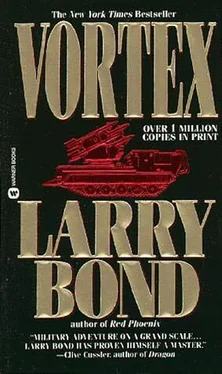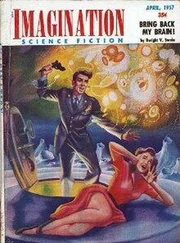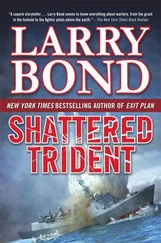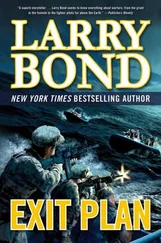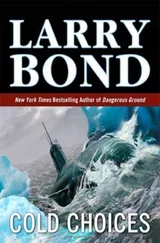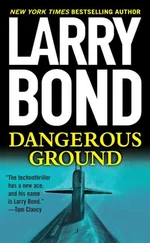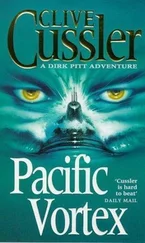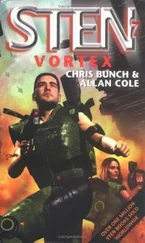DECEMBER 19-SEAL TEAM ONE, ABOARD HMS
UNSEEN
Boatswain’s Mate First Class Joe Gordon, USN, left the Unseen’s hatch in a silvery cloud of bubbles. The three other men in his SEAL detachment were already out. They signaled him with a small light, dimly visible through the water.
After closing the diesel submarine’s hatch behind him, Gordon swam over to them and pointed to the compass on his wrist. If they were in position-and the Unseen’s skipper had assured them they were-their target lay two thousand yards to the north.
Gordon heard a dull, muffled clank behind him and turned to see the hatch opening again. His wasn’t the only raiding party going out tonight. The
Unseen also carried another party of SEALs and one of SBS, Britain’s
Special Boat Service.
His three men all looked at him, legs and arms paddling slowly to keep them in place against the offshore current. Even in their face masks and other scuba gear, Gordon knew them all, and knew what they could do. Motioning, he pointed north. They started swimming.
He was glad to be out of the British submarine. He’d ridden subs often enough, but he decided that he didn’t like the British variant. They talked funny, ate funny food, and the thing always stank of diesel oil. And they were too tight. A U.S. nuclear sub was crowded, but after a full day in a
British boat, Gordon had wanted to ask for a marriage license. All they could do was talk. He chuckled inwardly. At least those SBS guys told some fascinating lies.
The sub’s small size was perfect for this job, though. The Sturgeon-class
U.S. nukes couldn’t get any closer to shore than the sixty-fathom curve, dumping them miles from their objective. Here, it was just a short swim-only a mile underwater.
Swimming felt good, stretching out the muscles, burning off some of that adrenaline flowing through his veins. He kept a sharp lookout for sharks.
The waters off Durban were famous for them, and he didn’t want an encounter to screw up the timetable. They were supposed to be ashore just after midnight.
The water was dark and the shoreline empty. Gordon could only rely on his compass and skills honed by long years of training to get him ashore. He certainly wouldn’t find any friends on the beach. Not that he expected any. SEALs were always the first in, and that was exactly what he wanted.
SECOND MARINE EXPEDITIONARY FORCE, SEA ECHELON AREA, OFF DURBAN
Fifty American and British ships lay shrouded in darkness fifty miles off the Natal coast. Massive, flat-decked amphibious assault vessels mingled with smaller ships carrying landing craft, tanks, and tracked LVTP-7 amphibious vehicles. Destroyers and frigates steamed back and forth, screening the formation against air or submarine attack. Inside each ship,
Marines and Navy crewmen worked through the night stowing gear, readying aircraft, cleaning weapons-making all of the thousands of last-minute preparations necessary for survival on a hostile shore.
SEAL TEAM ONE, NEAR THE LOUIS BOTHA INTERNATIONAL AIRPORT, SOUTH OF
DURBAN
Boatswain Gordon lifted his head above the surface of the water. The shoreline was a smooth expanse of sloping sand,
perfect for amphibious ships, but lousy for SEALs. He quickly scanned the area. They couldn’t be that far off.
There, off to the right. Reunion Rocks, a jumble of boulders jutting out from the shore, verified his navigation. Signaling silently to the rest of his men, Gordon submerged and without surfacing again, headed straight for the place where a small stream emptied into the Indian Ocean.
The roar of surf as he emerged from the water matched his mood. He was in hostile territory and ready for trouble.
The three other swimmers were only steps behind him, and they quickly moved into the cover provided by the rocks. Once there, they stripped off their swim gear and tore waterproof coverings from the rest of their equipment.
It was a warm night, but all of them wore dark-colored clothing from head to toe, including balaclavas.
A roaring scream ripped through the quiet night, and for one fraction of a second, Gordon thought they’d been ambushed. Instantly he and his three comrades hugged the ground, tearing at the coverings on their weapons and wondering what had gone wrong.
Then, as he frantically scanned the immediate area, his ears recognized the sound. It wasn’t gunfire, it was the sound of revving jet engines echoing off the airfield in front of them.
Their targets-the airfield’s runways and control tower were separated from the beach by a short strip of industrial buildings. At this time of night, the warehouses and factories would be empty, and the buildings should provide the cover they needed to reach their objectives safely.
Gordon had been given a general brief on the invasion plan. Nothing specific-he was too far into enemy territory to be risked with detailed information. SEALs, though, were expected to act with initiative, and that required knowledge.
The main landing beaches lay just south of Durban. The Navy and Marine brass aboard the Mount Whitney had chosen the southern side of the city to stay close to Louis Botha Airport-only about ten kilometers from the city center.
The first Marines ashore would fan out to secure the beachhead for follow-on waves. At the same time, other Marines would come in by air, dropping right on top of Louis Botha itself. From there, the American and British troops would push inland—surrounding the city itself. Seizing Durban’s airfield and capturing its port facilities were the first steps on the long road to
Pretoria.
Reconnaissance photos had shown that the port was already blocked. The
American naval blockade had already put an end to South Africa’s maritime trade, so the Afrikaners had nothing to lose by wrecking it.
But the airfield was still in constant use. Although it no longer served as an international airport, military transports and cargo aircraft landed and took off on a regular basis. Gordon looked at his watch and smiled. In a little over an hour, Navy aircraft were going to close the airport, violently.
So far, U.S. carrier-based aircraft had stayed far away from the Durban airport. Allied commanders didn’t want to spook the Afrikaners into destroying its runways, control tower, and refueling facilities prematurely.
Gordon’s mission was simple. In the few hours remaining before the first assault waves touched down, his and the other two SEAL teams had to find any explosive charges and disable them. If possible, they had to do all that while making the Afrikaners think they still had the airport wired for demolition.
The SEAL smiled grimly. The airport garrison three kilometers from here was going to have one hell of a rough night.
COMANCHE FOUR, ABOARD THE USS CARL VINSON
Comanche Four leapt off the deck. Even when it was fully loaded with fuel and bombs, the Vinson’s portside catapult still had the strength literally to throw the A-6E attack jet into the air.
Lt. Mark Hammond quickly lowered the Intruder’s nose, depending on instinct more than the instruments to keep the big plane in the air. The cat could get him into the air, but it always took a few seconds for the
A-6E to decide if it liked it or not.
Hammond felt the machine steady under him, and for the first time he looked for the rest of his flight. The three other Intruders had been launched from the carrier just minutes ahead of Comanche Four. He scanned the still-dark night sky ahead. There! He spotted their navigation lights blinking low over the water.
The three Intruders were already heading west-toward the city just sixty or so miles away. This close in to their target they didn’t have to worry about tanking up from the KA-61)s already aloft. But they weren’t going downtown just yet. The air commanders aboard the Carl Vinson and the
Читать дальше
